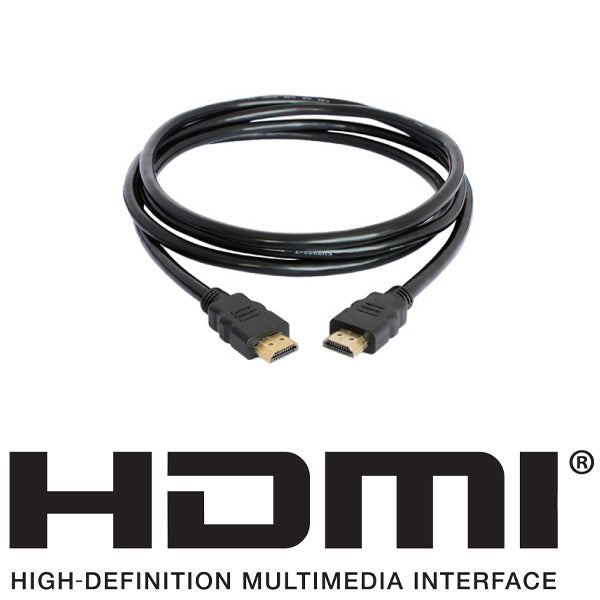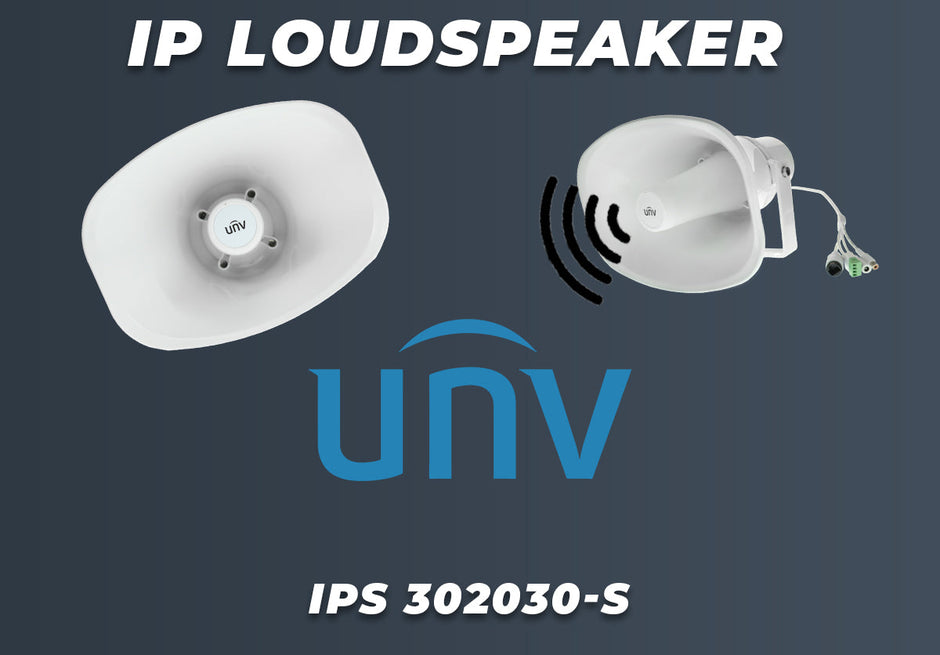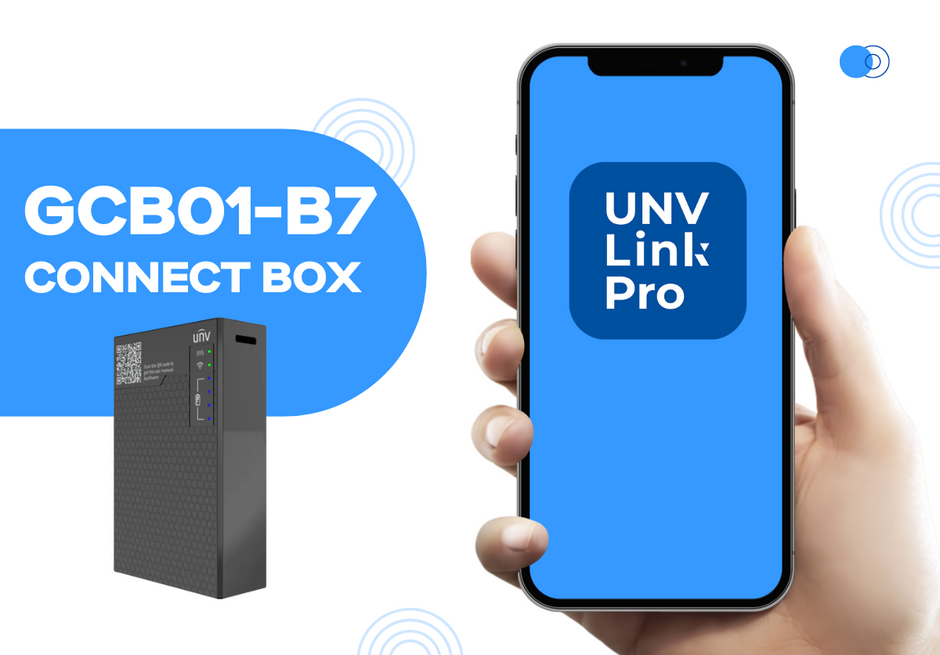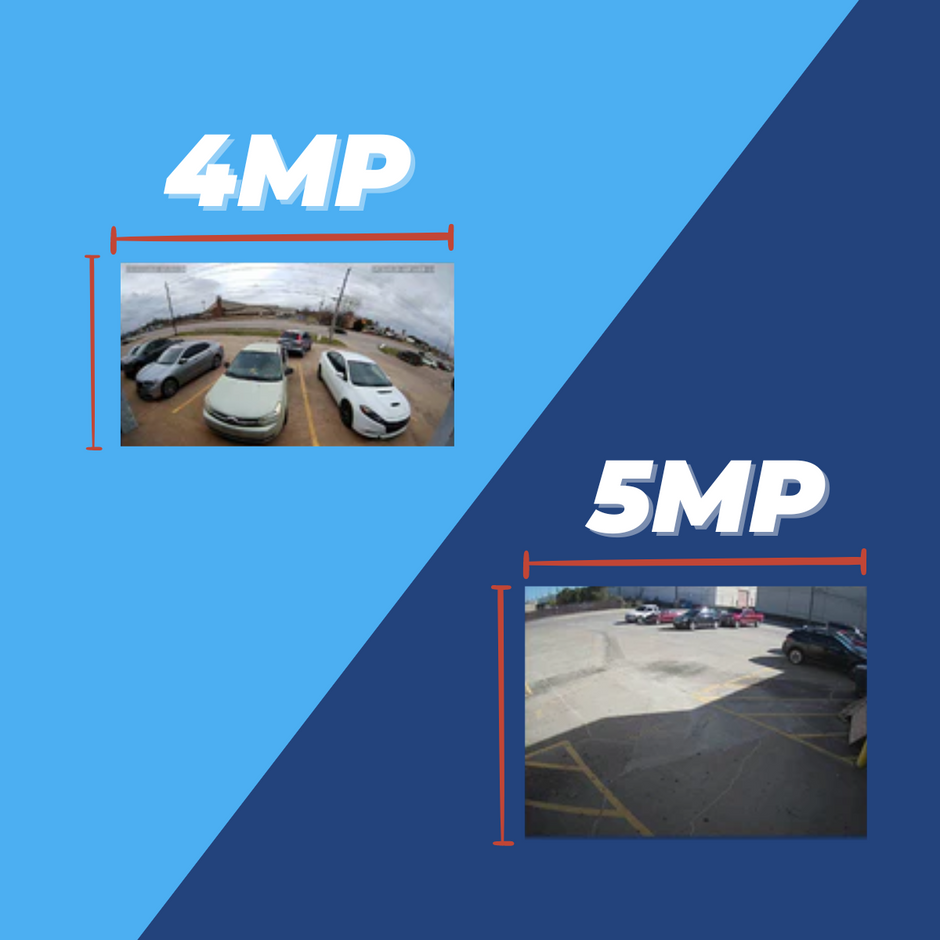Security camera cables can be one of the most difficult parts of setting up a surveillance system. The type of security camera cable you need will depend entirely on what system you have and the tasks you are trying to accomplish. If you have an analog system or an IP system, you'll use different kinds of cables.
While there is some variation, here are the most common security camera cable types used for each setup.
If you have an analog or HD-TVI security camera system, you will need RG-59 Siamese cables to send power to and receive video from your security cameras.
If you're setting up an IP security camera system, you will most likely use cat5e Ethernet cables to send both power and data to your IP security cameras. You may also need a 12v power supply if sending power over your Ethernet cable is not an option.
Throughout the rest of this blog post, we'll go more in depth about all the cable types you might come across when setting up a hard-wired security camera system.
Everything You Need to Know About Ethernet Cable
Let's start with Ethernet cables, which is the most common cable you're going to need for your hard-wired security camera system. If you're setting up an IP system, you're definitely going to need them. However, even if you're setting up an analog security camera system, you may still want to consider picking up some of these handy cables.
An Ethernet cable contains eight insulated copper wires split up into four pairs. Within each pair, the wires are twisted around each other for the whole length of the cable in order to reduce the signal interference. This is why the wires inside an Ethernet cable are called “twisted pairs.”
For IP Security Camera Systems
If you're setting up an IP security camera system, you're going to need to power your security cameras and connect them to the network. Ethernet network cables can accomplish both of these tasks.
The main function of Ethernet cables is to connect one thing to a network of things, hence the label "network cable." So first and foremost, these cables connect your IP security cameras to your home or office network. It's through this network connection that you're able to access, manage, and view your security cameras.
However, Ethernet cables do have a secondary function. If you have a Power over Ethernet (PoE) switch, your Ethernet cables can also connect your security cameras to power. With this method of cabling, you only have to worry about one cable running to and from your security cameras.
At Nelly's Security, we offer PoE switches to fit any situation. Just need a single port injector? A PoE extender? A full 48 port system? We've got you covered. (Click here to view our IPCamPower PoE products). Alternatively, if you're using one of our Network Video Recorders (NVR) for your IP security system, it will come with a PoE switch built into the back for convenient and instant plug-and-play power and video.
For Analog Security Camera Systems
If you have an analog system, you can still take advantage of Ethernet network cables, even though you don't need to connect your analog or HD-TVI security cameras to your network. Using a video balun (like this one), you can convert the RJ45 Ethernet connector to a BNC connector, for use with RG-59 Siamese cable.
Why would you want to use Ethernet cables for analog security camera systems? Using a video balun to convert the Ethernet cable to a BNC connection does have a few benefits.
- Ethernet cables are cheaper than Siamese cables.
- Ethernet cables can carry data for longer distances.
- In some homes, Ethernet cable runs may already exist, saving the time and energy that comes from laying new cables.
Categories
Chances are, you've seen an Ethernet cable described with the word "cat" followed by a number. This refers to the "category" of Ethernet under which that particular cable falls.
Ethernet cables come in several different categories, which give information about how the cable was constructed, how much data it can handle, and at which speeds it can carry the data. Check out the table below for a rundown on what each category of Ethernet cable can do.
| Category | Transmission Speed | Max Bandwidth |
|---|---|---|
| Cat 3 | 10Mbps | 16 MHz |
| Cat 5 | 10/100 Mpbs | 100 MHz |
| Cat 5e | 1000 Mbps (1 Gbps) | 100 Mhz |
| Cat 6 | 10,000 Mbps / 10 Gbps* | 250 Mhz |
* Cat 6 cables only support speeds up to 10Gbps up to around 55m (180 ft).
For most CCTV setups, you’ll want to use cat5e Ethernet cable. Cat5 is slow and outdated, and rarely used anymore. Cat6, on the other hand, is a bit of an overkill for most surveillance systems. Cat5e is cheaper and more common than cat6. That said, if cable cost isn’t an issue for you, investing in cat6 cables from the start will future-proof your network and allow you to upgrade to higher-bandwidth products as newer technologies are released.
If you're using a video balun to convert your Ethernet cables to a BNC connection for your analog security system, then the category really doesn't matter. In this case, you're not using the Ethernet cable to carry network data, so using a more expensive cat6 cable won't offer any benefits over cat5e, or even cat5 cables.
Ready to Buy Some Ethernet Cables?
You can either purchase pre-made Ethernet cables or bulk Ethernet cables. If you buy these cables in bulk, you'll need to add your own jacks to both ends of your cable. Read on into the next section to learn more about what connectors and tools you need to make your own Ethernet cables.
Connectors and Tools
The connector you will want to use with your Ethernet cable is called RJ45, which stands for Registered Jack 45. Also known as 8-position 8-contact (8P8C) Modular Connectors, these jacks separate the 4 Ethernet twisted pairs into 8 individual copper strands. Click here to purchase some RJ45 pass-through connectors.
What tool do I need to connect RJ45 jacks to an Ethernet Cable?
To connect an RJ45 jack to an Ethernet cable, you'll need a modular crimping tool. You can use this tool to strip the cable cover and to crimp the RJ45 connector onto the Ethernet connection. For a simple demonstration of this process, check out the video below.
Other Ethernet-Related Products
If you're using Ethernet cable to set up your surveillance system, you may also be interested in the following tools and connectors.
- RJ45 Couplers: With these couplers, you can connect two Ethernet cables together, extending the total length of your cable.
- Ethernet Cable Tester: If you're terminating your own Ethernet cables, you'll want this tester to make sure you got the connections right.
- Ethernet Cable Installer's Kit: If you're going to be working with Ethernet cables a lot, it's worth it to invest in a full kit that comes with several handy tools.
Benefits of Ethernet Cables
You may be tempted to ditch the cables all together and go all wireless. While this can be helpful in certain situations, this isn't always the best move. There are many benefits to using Ethernet cables, whether you're setting up an IP or even an analog security camera system. We've named a few of them already, but here's a more complete list. Ethernet cables are beneficial because...
- They're fast. Even with Cat5e, it's possible to get network speeds up to a whole Gigabyte. Wi-Fi is constantly getting better, but it's just not quite there yet.
- They're reliable. No matter how good your Wi-Fi signal is, it's going to be spotty from time to time. You'll most likely experience lag with your security cameras, and there will be times when they completely cut out. This may still happen with a hard-wired network, but it will be much less often and much less drastic.
- They're cheap. You can buy Ethernet cable in bulk more cheaply than you can buy other types of cable, making this great for both IP and analog security camera setups.
- They're available. Chances are, as you read this blog post, there's an Ethernet cable or two just sitting around your office unused. It's less likely that you have spare Siamese cables laying around the house.
- They're versatile. Use them for your security cameras, use them for your computer, use them for your printer, use them for all your networking needs.
- They're easy! You are two clicks away from instant video on your security camera. One end into your camera, the other end into your NVR's PoE switch. Boom, you have video.
Everything You Need to Know About Siamese Cable
For an analog or HD-TVI security camera system, you will need to use RG-59 Siamese cables. These cables, which are actually two cables combined into one, allow you to power your security cameras and receive video information from your security cameras with one cable run.
At each end of the cable run, you'll simply separate the cables to use them for their intended purposes. One cable will contain two copper wires for powering your cameras. You will need to connect these wires to a 12v power supply. The larger cable is the coaxial cable, which contains one central conductor surrounded by a layer of insulation, which is surrounded by a second conductor, which is surrounded by a second layer of insulation. Your coax cable, which connects your analog camera to your DVR, will recieve video signals from your cameras.
Siamese Cable Thickness
Siamese cables vary in thickness, which is referred to as "Radio Guide." As a general rule, the thicker the cable, the longer it can go without losing its signal. The thinner the cable, the easier it is to work with.
Since CCTV systems are usually self-contained and don’t need mile-long cable runs, RG-59 is the standard cable thickness for analog security camera systems. It provides enough thickness to run video signals across your property, but it’s also thin enough that it’s still pretty easy to work with.
Ready to Buy Some Siamese Cable?
Just like the Ethernet cable, you can purchase RG-59 cable pre-made or in bulk. If you purchase in bulk, you'll have to connect your own BNC connectors. Keep reading to learn more about what kind of connectors and tools you need to make your own Siamese cables.
Siamese Cable Connectors and Tools
The Siamese cable is two cables rolled into one, so you’ll need two different connectors for each end of the cable run: a BNC video connector and a DC power connector.
BNC Connector
The coaxial side of the cable carries the video signal from your security camera to your DVR. For the coax cable, you’ll need BNC connectors to install the cable into the camera and into the DVR.
There are a few different types of BNC connectors.
BNC Crimp-On Connectors
First let's take a look at crimp-on BNC connectors. Just like crimping your RJ-45 connector onto the Ethernet cable, crimp-style connectors use a tool to crush the metal BNC connector onto the coaxial cable.
Crimp connectors are the fastest, easiest, and most affordable connectors, but they may not be the best option for all installations. BNC connectors that are crimped onto the cable may not last as long as other types of BNC connectors. It also may allow weather, moisture, and other elements into the cable, causing a poor connection over time.
BNC Compression Connectors
BNC compression connectors are less convenient but lead to higher-quality installations. A crimp tool crushes the crimp-on connector into place, which can flatten out the cable. A compression tool applies pressure evenly around the whole connector and cable, allowing the cable to maintain its original shape.
BNC compression connectors provide a much more reliable seal that will last longer and provide higher quality signals when compared to crimped seals.
12V DC Connectors
The second cable that makes up your Siamese cable is what you'll use to run power to the camera through a 12v power supply. Depending on your camera's power connection, you'll likely need both a female and a male DC pigtail connector.
You'll attach the female DC pigtail connector at the DVR end of your cable run. This will allow you to connect a 12v power supply. If you're connecting multiple cameras to your DVR, you can use a splitter to split the power supply into however many channels you need. Keep in mind that the more ways you split your power supply, the more amps you will need to provide sufficient power to all your cameras. We recommend using a 5 amp power supply to power your cameras.
Then you'll most likely attach a male DC pigtail connector, or another female connector in some cases, at the camera end of the cable run. This will allow you to plug the camera directly into your power cable.
Benefits of Siamese Cables
RG-59 Siamese cables have stood the test of time. Even in today's digital age, these coax cables are still widely used and enjoyed. That's because these cables have a number of benefits, such as...
- They're Just Right RG-59 cables are the perfect size. They're not so small that they break easily or lose video signal, and they're not so large that they're difficult to work with.
- They're convenient. With two cables rolled into one, you don't have to worry about running multiple cables to each camera in your surveillance system. One cable run carries both the power wires and the video coax cunductors.
- They're shielded. Even though the Siamese cable is two-in-one, each cable runs through a separate insulated cable jacket. Because of this, your cables are protected from crosstalk, or electromagnetic interference between your cables.
- They're durable. Siamese cables may be a little more expensive than other cable types, but they will last a lot longer and endure a lot more wear and tear.
Ethernet Cable vs. Siamese Cable
Now that you know everything you need to know about Ethernet and Siamese cables, you may be wondering which one you should use. If you're setting up an IP security camera system, obviously you're going to need Ethernet. But what about if you're setting up an analog security camera system?
What you end up using is going to be a matter of personal preference.
When connected to a video balun, Ethernet cable serves pretty much the same purpose as a Siamese cable. There's only one major difference. The Ethernet cable is sending power and video data inside the same cable through twisted pairs, whereas the Siamese cable is sending power and video data through two separate insulated cables that are connected together.
If you're going to be running a lot of cable, Ethernet is cheaper and easier to work with. It's a great option for installing an analog system. If you typically install IP camera systems and have a bunch of Ethernet cable at your disposal, there's no need to invest in a whole spool of another cable.
The downside of using Ethernet cables instead of Siamese cables is video interference. The twisted pairs inside the Ethernet cable help keep interference to a minimum. However, twisted pairs within the same cable are not nearly as good at preventing signal interference as two separate insulated cable runs. Since the Siamese cables keep these two connections separate, these cables will give you slightly better video quality without the crosstalk.
Bulk Cable vs. Premade Cable
Maybe you know which type of cable you need for your security camera system, but you're wondering if you should buy your cables pre-made or in bulk. This is a great question that, once again, will totally depend on your personal preferences and unique situations.
The Price of Bulk Cable vs. Pre-made Cable
Buying your cameras in bulk is going to be pricier up front, but if you use a lot of cable, it's going to save you a ton of money later down the road.
A simple box of 1000' of Ethernet cable, for instance, is going to cost you a little over $100. To get 50' of the pre-made cable is going to cost you about $15.
Now, if you're only ever going to need 50' of Ethernet cable, then it's a no-brainer. You'll probably just want to buy the premade cable. However, if you're going to end up using a lot more Ethernet cable, you may end up buying the 50' cable 20 more times, in which case you'll be paying $300 for 1000' of Ethernet.
So based on price alone, if you're going to use only a small amount of cable in your lifetime, or if you're just looking for a cheap solution for your current situation, go with pre-made cables. If you're going to end up using more cable and you want to save money in the long-run, then go with bulk cable.
The Quality of Bulk Cable vs. Pre-Made Cable
Pre-made cables are going to come with professionally-connected RJ45 connectors on both ends of the Ethernet cable, so you can usually be confident that your connections will be high-quality. Of course, this depends on where you buy your cables, so do your research first to ensure that you're purchasing from a quality maufacturer.
With bulk cables, you'll have to connect the ends of your Ethernet cable yourself. This is easy to do, and will only take you a few seconds. However, there's always room for error. But if you pick up one of these cable testers, you'll always know if you've connected the ends of your cable correctly, which will save you a lot of work having to rerun new cables if something did go wrong.
So when it comes to connection quality, pre-made cables are more reliable, since there's always room for human error. However, once you get the hang of cable crimping and get into the habit of testing your connections, bulk cable that you make yourself can be just as reliable.
The Aesthetic of Bulk Cable vs. Pre-Made Cable
One of the biggest issues with pre-made cable is that you're restricted to a pre-defined length. What if you need a Siamese cable run from your analog security camera to your DVR 37 feet away? Good luck finding a pre-made cable that's 37 feet long. You'll end up having to either get a 50 foot cable and bundle up the ends, or you'll need a couple of 20 feet cables that you'll have to extend with a connector in the middle. Either way, it's going to end up looking unprofessional and jury-rigged.
If you get bulk cable, you'll be able to measure and cut the exact length of cable that you need. You won't have to bundle anything up or connect two cables together. This will result in a clean and preffessional-looking installation.
The Verdict
***In most cases, it's probably best for you to invest up front in bulk cable that you measure, cut, connect, and run yourself. ***More than likely, you will end up needing more cable later down the road. If you invest in more cable than you need for your current project, you'll always have more for your next project. Bulk cable is easy to make, lends itself to a more professional installation, and ends up saving you money in the long run.
Other Security Camera System Cables
We have written in depth about the two main cables you'll need for setting up your IP and analog security camera systems. However, there are several other cables that your situation may or may not require. Here are a few more cable types that you should know about if you're starting to dive into the world of surveillance systems.
HDMI Cables
Whether you're using an NVR with your IP security camera system or a DVR with your analog system, you're going to want to grab an HDMI cable to connect your recorder to an external display, whether it's a computer monitor or a television screen.
Through the HDMI interface, you'll be able to manage your recorder's settings, stream live footage from your cameras, and review recorded video straight from your recorder.
VGA Cables
If you have an analog system, you can also connect your DVR to an external display using a VGA cable. This gives you the same display and functionality as an HDMI cable. If you have two displays, you can use both displays at once by running your HDMI cable to one display and your VGA cable to the other display.





















